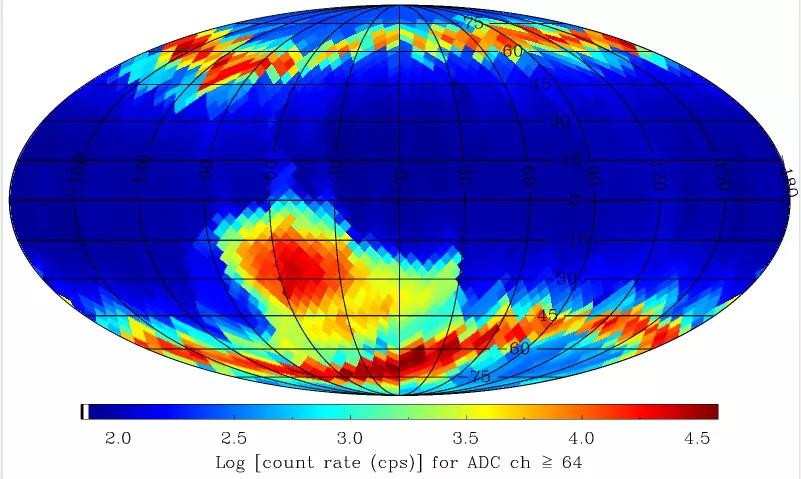Designed by the researchers of the Konkoly Thege Miklós Astronomy Institute (CSI) of the ELKH Research Centre for Astronomy and Earth Sciences (CSFK), GRBAlpha, a small satellite built within the framework of a Hungarian-Slovak-Japanese partnership, was launched into spaceflight on March 22, 2021 from the space airport in Baikonur (Kazakhstan). The mission's goal is to help reach a more accurate understanding of phenomena known as gamma-ray bursts, one of the most exciting topics in high-energy astrophysics, using new types of detector systems that can be used on small satellites up to 10-30 centimeters in size. Researchers at CSI and the Institute of Physics at Eötvös Loránd University have summarized the experiences of the first three months that the small satellite has spent in space and the results of its research.
Gamma-ray bursts are short-lived events in which large masses of celestial bodies, such as exploding stars or fusing neutron stars, emit electromagnetic radiation with properties similar to visible light, but much more energetic and concentrated, in the form of gamma radiation. "Gamma radiation is inherently difficult to focus on, so as is customary in classical imaging and photography, we can't really get answers to even the basic questions of where these celestial events took place, so we can then examine them with other types of instruments and telescopes." said András Pál, who is leading the development of the system on behalf of CSI.
“However, we are able to take advantage of the fact that even the narrower environment of the Earth in the cosmic sense can only be traversed by light in a few hundredths of a second. This means if we position several similar satellites, with surprising accuracy we can obtain the apparent celestial coordinates of the radiation from the observed time differences using the triangulation method, which is different to other characteristics that can otherwise be measured with a satellite," added Werner Norbert, who helped provide scientific coordination for the project.
"The first three months of the mission can be said to have been successful in several ways: the satellite's on-board systems are all in good condition, and both independent channels of the detector system are working well," László Mészáros, a researcher responsible for the mechanical design of the detector.
CSI staff have determined the background signal level for the entire environment around the Earth, above which we need to look for
these sources. "We are past a number of interesting technical tests, such as the routine updating of several software components of the data acquisition electronics, so that you can take over most of the functions of the on-board computer if the need arises," said Masanori Ohno, who is responsible for the project, who moved to Budapest from Hiroshima, Japan and joined the Institute of Physics of Eötvös Loránd University. “These solutions are unique in their kind, especially on such small, 10x10x10-centimeter satellites, and they greatly increase the success of the experiment,” said astrophysicist Jakub Ripa proudly.
However, GRBAlpha is only the first in a series of low-energy astrophysics devices developed in collaboration with this team: similar detectors built by the team will launch into space in December this year on board the Czech-developed VZLUSAT-2 satellite, and researchers at the Astronomical Institute are also currently working on a newer detector. This actually opens the way to triangulation-based
positioning.
------------------------------------------------------------------------------
Further articles about the satellite:
https://planetology.hu/grbalpha-budapesti-asztrofizikai-kiskocka-az-urben/
Images used:
What is GRBAlpha looking for and measuring? The goal is to identify short, energetic gamma-ray bursts that resemble the suspicious signal shown in the figure. However, under the influence of particles from the Sun, there are constantly particles in the area around the Earth that collect under the influence of the magnetic field around the North and South Poles, as well as in the area also known as the South Atlantic Anomaly. Against this background, we need to look for eruptions of astrophysical origin. When GRBAlpha flies in denser regions, i.e., above polar light, the background radiation also increases.

A complete radiation map of the Earth's environment based on GRBAlpha measurements. Gamma eruptions can be effectively searched for when the small satellite is above the areas marked in blue. The map shows the zones of particle radiation: the rings that are also responsible for the formation of polar light, and the South Atlantic Anomaly.